13
RE-VEILING THE MAPS
Many cultures, religions, and societies throughout the world and history alike have legends, symbols, and interpretations regarding veils. In Royal Arch Freemasonry, there is a ceremony known as the “passing of the veils,” which, like most Masonic symbols, can have multiple interpretations. This ceremony is said to have changed throughout the years; in some instances, it has been ignored by Freemasons in various countries.
One interpretation is that the veil has alchemical symbolism, which I have covered in chapter 6 of this book regarding Fulcanelli. In a paper titled “Passing the Veils: Ceremony and History” Gordon Mogg observes that “in the early ceremonies, the veils were three in number.” Mogg goes on to note that the Kabbalistic text The Book of the Greater Holy Assembly refers to the three veils of negative existence.
The first veil is called in Hebrew, AIN (which means ‘No’), i.e., negatively. The name is spelled with three letters and foreshadows the first three sefiroth. The second veil is called AIN SOF, which means “no bound” or “boundless.” In Hebrew, this name is written with six letters and it alludes to the first six sefiroth [of the Kabbalistic Tree of Life]. The third veil is called AIN SOF AUR, which means “unbounded light.” This name consists of nine letters and refers to the nine sefiroth. After this there remains Malkuth (“Kingship”), the tenth sefiroth. The Candidate had to pass through these veils, after which he was said to have attained Malkuth or Kingship; that is to say it was the climax of Freemasonry, as, according to General Charles Rainsford; who represented English Freemasonry in 1784, when consulted by French Masons, he contended that the ritual of Freemasonry was derived from the Kabbalists.1
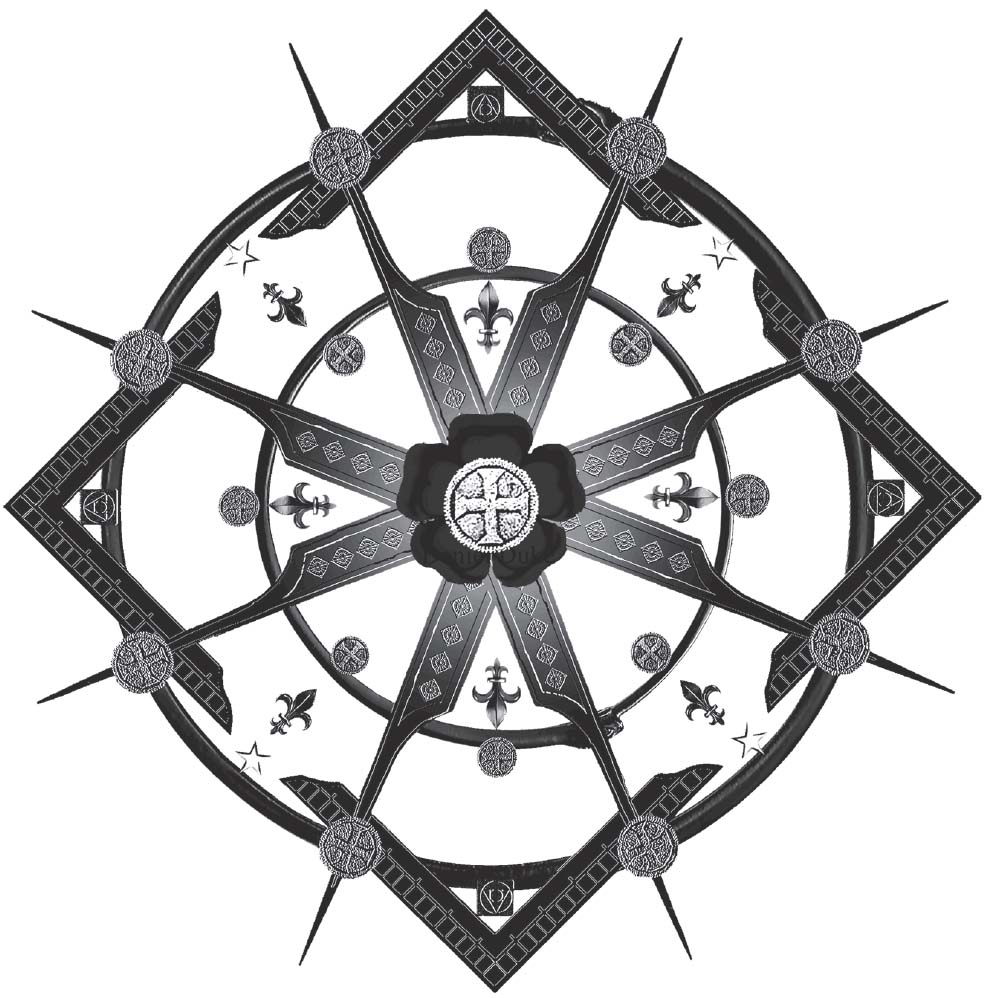
Fig. 13.1. My version of the Template
Mogg’s association of the Royal Arch Mason ceremony involving the passing of the veils with the sefiroth of the Tree of Life does a great job of explaining the two treasure templates I have been describing throughout this book: the Veil and the Tree of Life. When I found Mogg’s paper, I was ecstatic, as it goes hand in hand with what I have discovered.
Another interesting piece of information regarding the Kabbalistic Tree of Life is a division between the top three sefiroth and the seven lower ones. The top three, Crown, Wisdom, and Understanding, can be viewed as representing the Holy Trinity in an esoteric Christian sense, or, in a more traditional Jewish Kabbalistic view, the realm of the super-conscious and the conscious intellect. The lower seven sefiroth are often listed as conscious emotions. These two halves can also be viewed as representing the spiritual world above and the physical world below.
Here, it’s not so much the meanings I want to focus on but rather the division of the Tree of Life into two parts with the top three sefiroth separated from the bottom seven. We know of two large treasures, mentioned earlier: one in Victorio Peak and the other near Georgetown, Texas. Many have claimed that Victorio Peak was a part of the legendary Cibola, one of the lost Seven Cities of Gold. If that is the case, would it be too far out of the box to wonder if the seven lower sefiroth could possibly give the locations of the Seven Cities of Gold? In that case, what do the locations of the top three sefiroth lead us to? If the bottom seven represent the physical world, the top three might have something to do with the spiritual world.
Timothy Hogan has mentioned that the Knights Templar were concerned with safeguarding sacred relics and texts involving Jewish, Sufi, Druze, and Christian religious traditions, which they felt were being threatened by not only the crusaders but also by the Catholic church itself. Could the three higher sefiroth contain sacred relics and texts related to Judaism, Christianity, and Islam? If so, they may contain ancient texts from other cultures, religions, and mystical traditions as well. Hogan has also stated that the Kabbalistic text the Zohar and other holy texts were discovered by Templars in the Holy Land and brought to Jewish communities in Spain, where they were published for the first time. He further states that the Zohar was published in the same town by the same printers who published the Grail story Parzival.
I was not able to find any proof of that claim, but I did find it interesting, because the man given credit for publishing the Zohar is Moses de Leon, a Spanish rabbi. Moses de Leon had close contacts with Joseph Gikatilla, whose Gates of Light was later published by Paolo Riccio in Latin as Portae Lucis. On the engraving for Riccio’s Portae Lucis, two illustrations caught my eye. The first is a diagram of the Tree of Life, which differs slightly in shape from the illustration on the book’s frontispiece. The Tree of Life on the frontispiece is more elongated or triangular on top, whereas the Tree of Life found within the book resembles the more familiar shape for the Tree of Life (see fig. 13.2 below). Normally, this wouldn’t pose a problem, but it left me wondering which shape should be used in the Tree of Life template on a map.
The second illustration in Portae Lucis that caught my eye and ties in with Hogan’s observations is found on the last page of Portae Lucis. This illustration appears to be of a knight holding a crescent-shaped object over his head. In the top center of that object is what appears to be a cup, possibly a representation of the Holy Grail (see fig. 13.3 below). Why would an illustration of a knight holding a grail be in there? Considering what appears to be a hidden map on the frontispiece along with a hooked X symbol and other symbols, I can’t help but wonder if stories of lost Templar treasures and Grail legends are within the realm of possibility.
Displaying the maps has proven to be a little more complicated than I had anticipated, mainly because they cover such large areas. Another problem with displaying locations is the potential for lawsuits brought on by my giving locations, possibly resulting in swarms of people creating a nuisance by descending onto private property in their search for treasure that may or may not be present. I will, however, give locations to areas located on public lands. Just make sure you follow local, state, and federal laws when searching and always gain permission in writing if you decide to search for one or more of these treasures. The locations I will list may or may not contain buried treasure or relics, but using the dimensions I have listed in this book will give you everything you need to locate all the other locations across the continent. As I stated before, each cell in the Veil template doesn’t contain a treasure; many do, but not all, much as a city map is full of buildings yet there are vacant areas throughout the city. In this case there are many vacancies. If a person knows of a treasure legend in an area, application of the Veil template may help you narrow down any possible locations—that is, if that treasure is connected to any of the groups listed in previous chapters.
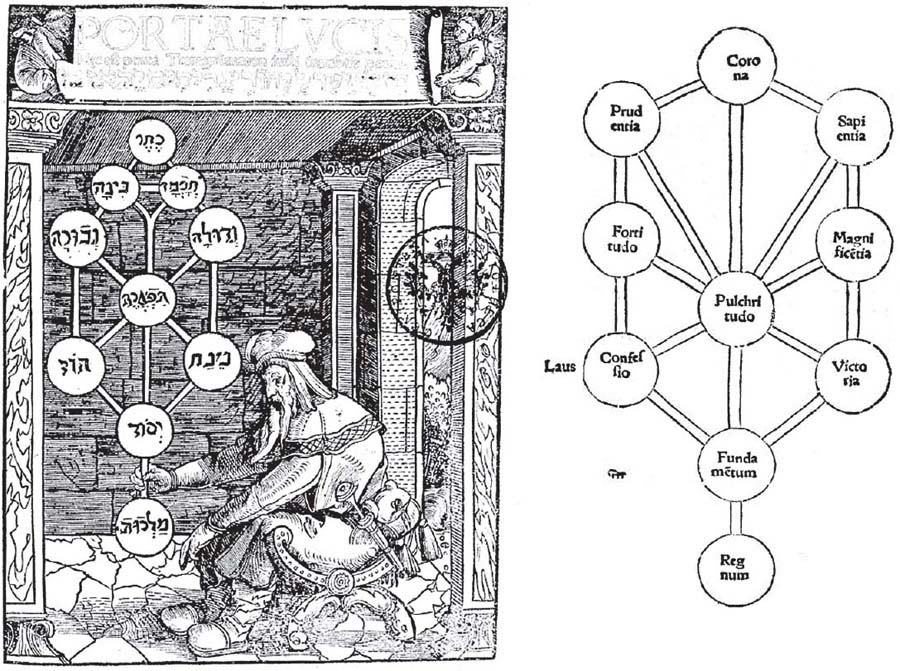
Fig. 13.2. Frontispiece of Portae Lucis with its Tree of Life (left) and a similar Tree of Life from within the book (right).

Fig. 13.3. Illustration on the final page of Portae Lucis
Before I reveal the maps, I want to point out an additional sefirah often used in the Kabbalistic Tree of Life: Da’ath or Knowledge. The location of Da’ath on this map is between Lynnville, Kentucky, and Palmersville, Tennessee, very close to the border between the two states. On the map of the Tree of Life template in figure 13.4 below, I have added the location for this additional sefirah and marked it with a dashed circle.
One location on the Veil template that is located on public lands is in Oklahoma and has a treasure story to go along with it. One source claims that Jesse James and his gang hid a large treasure, or at least a portion of it, on Tarbone Mountain, which is located within the boundaries of the Wichita Mountains National Wildlife Refuge. This particular site is on the small Veil template, and when one is looking at the small template, it would be located on the southwestern star. Another location on this same small Veil template, also located within the confines of the Wichita Mountains National Wildlife Refuge, is approximately 3.4 miles east-southeast of Tarbone Mountain. This location would be the bottom star within the lower corner of the template (fig. 13.5). The center of this small template is located approximately 33.97 degrees and 4.42 miles from the location on Tarbone Mountain. Using this will give you the bearing of the entire Veil template (with the small, medium, and large templates in each cell).
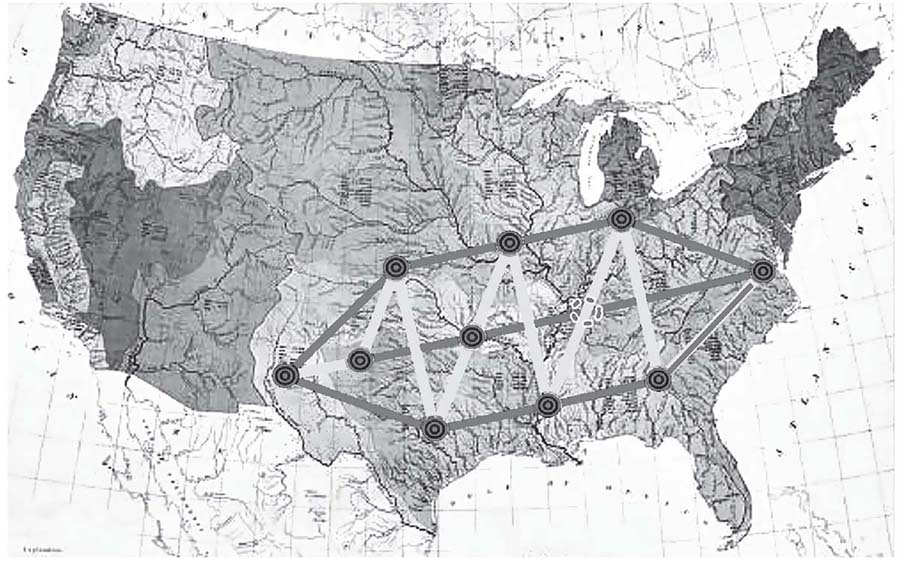
Fig. 13.4. Tree of Life template superimposed on a map of the United States
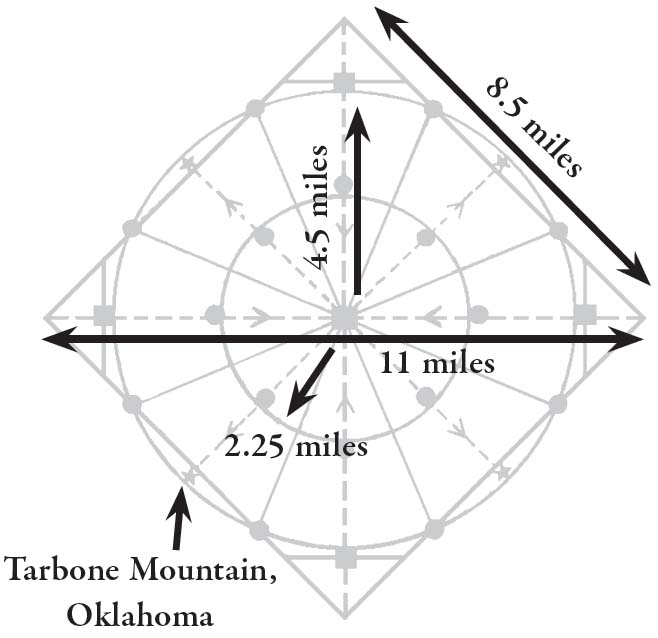
Fig. 13.5. Small template located at Tarbone Mountain, Oklahoma
Another possible location, in New Mexico, is on a medium-sized Veil template. This site is located inside the boundaries of Petroglyph National Monument on the northwestern side of Albuquerque, New Mexico (fig. 13.6). Based on my map, this potential site is located very near the northernmost parking lot. The center of this medium template is located approximately 247.18 degrees and 18.71 miles from the site at the Petroglyph National Monument.
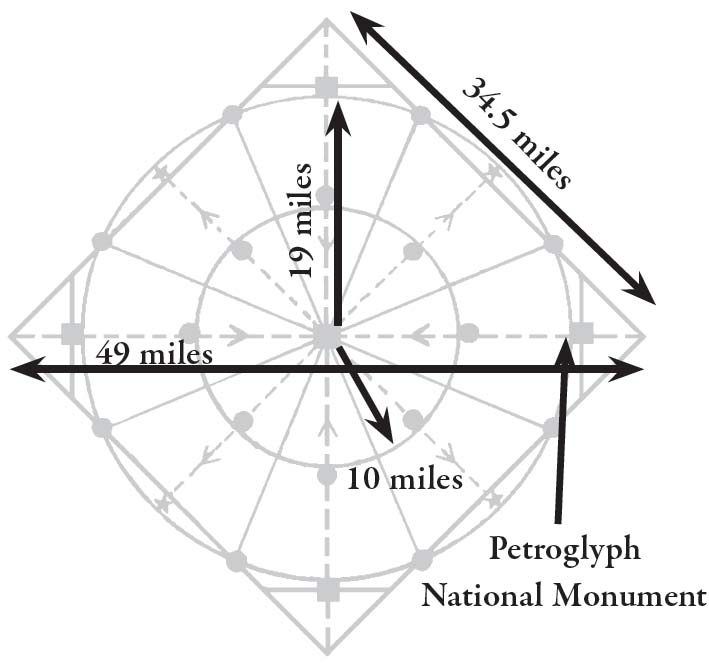
Fig. 13.6 Medium template located at Petroglyph National Monument near Albuquerque, New Mexico
The mention of petroglyphs brings up a curious mystery. This is the Los Lunas Decalogue Stone, which is located near but not within this template. What makes this stone so mysterious are the ancient Hebrew characters carved into it. It is described by author Donald Panther-Yates as “a giant boulder inscribed with the Ten Commandments in Phoenician Hebrew characters. The Indians, Spaniards, and Americans knew of its existence, and the nearby crypto-Jewish community of Los Quelites venerated it, building a secret altar that the Spanish Inquisition smashed and destroyed.”2 The mention of ancient Hebrew carvings in New Mexico reminded me of the Hebrew carving on a sandstone pillar mentioned by Louis Buff Parry in chapter 11 of this book. This sandstone pillar, located hundreds of miles north of New Mexico, is also located at or very near to a location on the Veil template! Was the Decalogue Stone carved by Hebrews or someone who knew the language? Do they, or did they, serve as trail markers to someone in the know? It never ceases to amaze me how the template, when it is laid out over a map, lines up on or very near to known treasure sites and sites of historical importance.
Another potential site located in the center of a large Veil template can be located within Carson National Forest, also in New Mexico. It can be found approximately 188.23 degrees and 9.12 miles south-southwest of the intersection of Highway 434 and North Angel Fire Road in Angel Fire, New Mexico.
I have chosen the sites in Oklahoma and New Mexico chiefly because they are located within public lands. The Veil template covers the entire nation and more, but many of the sites throughout the nation are on private property.
As mentioned in chapter 6, the large, medium, and small templates are all connected. The distances and bearings I have provided give you the angles and distances to piece it all together. As another example of the connection, I’ve created one more map for you below:

Fig. 13.7. Example of the Veil template placed over a map
I submit that the Tree of Life template gives the locations of two types of treasures. The top three sefiroth, representing Crown, Wisdom, and Understanding, could possibly hold sacred relics and texts dealing with Jewish, Christian, and Islamic religious and mystic beliefs. I wouldn’t be shocked if they contain relics and texts dealing with alchemical, occult, and Gnostic traditions as well. The lower seven sefiroth may very well mark the locations of the Seven Cities of Gold.
I believe the Veil template overlays the Tree of Life template, as was explained above in regard to the passing of the veils. I also believe the Veil template contains treasures of various kinds, but I seriously doubt the treasures in the Veil template are of a spiritual nature, like those in the Tree of Life template. As Fulcanelli stated, “The whole work of the art consists in processing this mercury until it receives the above-mentioned sign. And this sign has been called by the ancient authors the Seal of Hermes, Seal of the Wise (Sel des Sages, sel, salt, being put instead of Scel, seal, which confuses the mind of seekers), the Mark and the Imprint of the Almighty, his Signature, also the Star of the Magi, the Pole Star, etc.”3 A seal serves to cover or protect the more valuable or sacred items within.
The dimensions, scales, symbols, numbers, and their interpretations given in this book hardly seem to give this story the justice it deserves. In some cases, the interpretations are so widely varied that it would take volumes to write about them all. In researching and writing about this topic, I constantly had to catch myself from going off the path and down a rabbit’s hole. In fact, I suspect that that is exactly what was intended in some cases, so as to prevent people from getting too close. On the other hand, those who created this beautiful and amazing work may have wanted it to be found, and wanted whoever found it to have to work hard in doing so, knowing full well that the path of discovery would lead the seeker to question himself and everything he previously thought he knew. There is so much more to this story, and so much more that I am sure we have yet to discover.

This journey has been an amazing one, and it is far from over. I started searching for my great-great-grandfather’s treasure, which I first imagined as being at most a few jars of gold and silver coins, yet as it turned out, I ended up stumbling over what I truly believe could be one of the biggest treasure stories of all time, spanning over two thousand years. Just thinking of that, along with the history and lives of the people involved, is extremely humbling. I don’t believe a person can read something without being affected on some level, and researching the topics involved in this story has changed me profoundly. It has opened my eyes, or lifted a veil from before them, to deeper meanings behind what we perceive as reality, far beyond the everyday static of our ordinary lives. I hope that those who read this will do their own research and possibly expand on the work I have done. I believe if you do, you too will view the knowledge you gain as your own personal and priceless treasure, and, who knows, we may one day meet on this amazing trail of discovery.